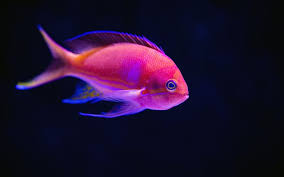Exploring the Influence of the Dragon in Chinese Cuisine

In Chinese culture, the dragon is not only a powerful symbol of prosperity, strength, and good fortune but also a significant presence in many aspects of life, including food. The influence of the dragon in Chinese cuisine is evident in both symbolism and culinary practices, shaping the preparation and presentation of dishes that reflect the essence of this mythical creature. This article explores the various ways in which the dragon is incorporated into Chinese food culture and how its symbolism enhances the experience of dining.
The Dragon as a Symbol of Prosperity in Food
In Chinese culture, the dragon represents power, auspiciousness, and wealth. As such, its association with food is often connected to ideas of abundance, success, and good fortune. Food plays an essential role in Chinese traditions, especially during significant celebrations, such as the Chinese New Year, weddings, and family gatherings. Dishes that feature the dragon, whether in shape, representation, or name, are believed to bring prosperity, health, and happiness.
The Dragon in Food Presentation and Design
One of the most direct ways the dragon influences Chinese cuisine is through food presentation. Dragon-shaped decorations or carvings made from fruits, vegetables, or dough are often used in festive dishes. For instance, intricate dragon-shaped dumplings are crafted by skillful chefs during the Chinese New Year to symbolize wealth and prosperity for the coming year. The dragon’s form is also incorporated into cakes and pastries, especially those made for celebrations, with edible dragon designs made from icing or sugar sculptures.
In some regions of China, certain noodle dishes are prepared and served in a way that mimics the shape of a dragon, often symbolizing long life and good fortune. These creative presentations not only make the food visually striking but also add a layer of symbolic meaning, reinforcing the connection between the dragon and prosperity.
Dragon as an Ingredient: A Symbolic Connection
In some parts of China, the dragon is believed to possess mystical qualities, particularly its ability to control water and bring rain. As a result, dragon-themed dishes often include luxurious ingredients that reflect abundance, power, and health. Dragon fruit, a vibrant and exotic tropical fruit, is one such example, often used in various Chinese desserts and fruit salads. Its bright pink color and striking appearance symbolize vitality and good fortune, making it a perfect addition to dishes meant to invoke prosperity.
Another example is dragon’s beard candy (龙须糖), a traditional Chinese sweet that is spun from sugar into delicate strands resembling a dragon’s beard. This candy is made using a process similar to making cotton candy, where sugar is stretched and pulled to form thin threads. It is often served during special occasions and celebrations, symbolizing the sweet fortune and prosperity that the dragon is believed to bring.
The Dragon in Ritualistic Foods
During certain religious and cultural rituals, dragon-themed dishes are offered to the gods or ancestors as a sign of respect and gratitude. The dragon-shaped mooncakes are commonly seen during the Mid-Autumn Festival, a time when families reunite to honor the harvest moon. These mooncakes, often intricately designed with dragon motifs, are exchanged as gifts, representing the prosperity and good fortune bestowed upon the family.
In addition, certain traditional soup recipes like dragon bone soup (龙骨汤) are named after the dragon, referencing the idea of strength and healing. While these soups do not actually contain any part of the mythical creature, the term “dragon” is symbolic, representing the rejuvenating qualities of the dish, which is made from nourishing ingredients such as chicken, pork, and various medicinal herbs. These types of dishes are often prepared during special occasions or for those who are ill, as they are believed to help restore health and bring vitality.
The Role of the Dragon in Special Occasion Foods
During Chinese New Year, the dragon takes center stage in the culinary world, with numerous dishes symbolizing a prosperous start to the year. A famous example is the Dragon and Phoenix dish (龙凤呈祥), which combines chicken (representing the phoenix) and fish (representing the dragon) in a beautiful, symbolic pairing. The combination of these ingredients represents the harmony of yin and yang, as well as the prosperity and well-being of the family.
Other foods, such as long noodles, are consumed during Chinese New Year to symbolize longevity, while dishes like fish (which sounds like the word for “surplus”) are served to ensure that the new year will be filled with abundance and wealth. The dragon’s association with water and its ability to control the flow of the seasons adds to its importance in ensuring that these foods have the desired symbolic meaning—bringing abundance and a prosperous future.
The Dragon in Chinese Street Food and Snacks
Street food plays an essential part in Chinese food culture, and the dragon’s influence is no less present here. Various snacks and foods are often associated with prosperity, and many are designed with the dragon in mind. For example, dragon-shaped steamed buns (龙包子) are a popular snack, especially during festive seasons. These buns are filled with delicious fillings such as pork or red bean paste and are shaped like a dragon’s body or head to symbolize good fortune.
Another common street food associated with the dragon is dragon’s beard candy (龙须糖), mentioned earlier, which is often sold at street markets during festivals. Its delicate texture and sweet taste symbolize the sweet rewards of hard work and good fortune, making it an ideal treat for those seeking prosperity.
The Dragon’s Influence on Modern Chinese Cuisine
In modern Chinese cuisine, the influence of the dragon continues to inspire chefs and food enthusiasts alike. While traditional dragon-themed dishes remain popular, contemporary chefs are increasingly experimenting with new ways to incorporate dragon-inspired motifs into their cooking. For example, some high-end Chinese restaurants have begun using dragon-shaped sculptures made from sugar or caramelized fruits as part of their dessert presentations. These modern takes on dragon-themed food continue to evoke feelings of wealth and prosperity, showing that the dragon’s influence is alive and well in today’s culinary scene.
Furthermore, fusion cuisine is another area where the dragon’s influence is being explored. Traditional Chinese dishes are being reimagined with a modern twist, often incorporating dragon-like motifs or symbolism into the dish’s name, appearance, or flavor profile. By blending classic Chinese elements with contemporary ingredients, chefs are keeping the dragon’s symbolism relevant to the tastes and trends of today.
Conclusion
The dragon is a symbol of power, prosperity, and good fortune in Chinese culture, and its influence is deeply embedded in Chinese cuisine. From luxurious ingredients to dragon-shaped food designs and traditional dishes, the dragon’s presence in food reflects its role as a bringer of abundance and success. Whether through its symbolic meaning or its use in festive meals, the dragon continues to inspire culinary creativity, ensuring that Chinese food remains a vibrant and meaningful part of cultural celebrations. The dragon’s connection with prosperity, vitality, and health is more than just a symbolic gesture—it’s a celebration of life, family, and the hope for a bright future.

